#ControlSystem
Explore tagged Tumblr posts
Text
🎛️ What is Control System Engineering? Discover how engineers design systems to control devices and processes efficiently.
1 note
·
View note
Text
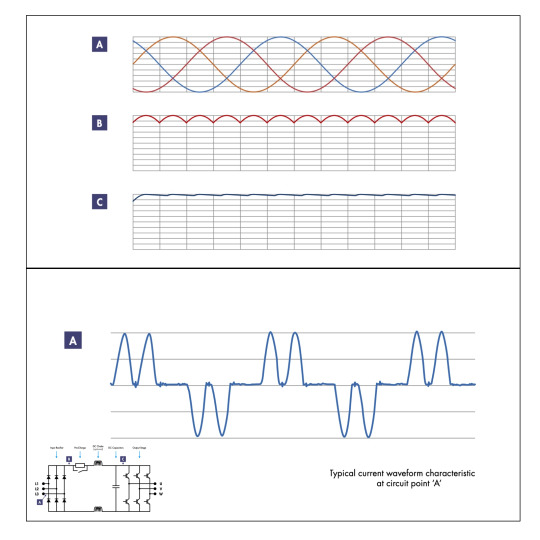
VFD Circuit Design (Continued) - Variable Frequency Drives
The VFD Exchange
#variablefrequencydrives#vfd#acdrives#industrial#controlsystem#acmotors#variablespeed#variabletorque#inverters#drives#electrical#engineering#automation#volts#amps#kilowatts#1phase#3phase#manufacturing#crushers#quarries#farms#agricultural#heating#ventilation#airconditioning#irrigationpump#watersupply#marine#ports
0 notes
Text
Autonomous Vehicle Control
July 18, 2024
by dorleco
with no comment
Autonomous Vehicle Technology
Edit
Introduction
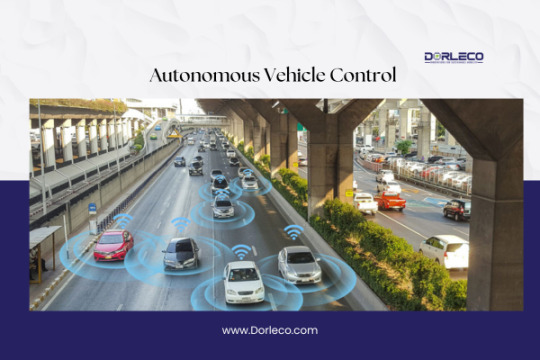
Self-driving automobiles, sometimes referred to as autonomous vehicles, are a cutting-edge technological advancement that could revolutionize our daily lives and modes of transportation. These cars mimic a human driver’s decision-making process by using sensors, software, and control systems to make real-time decisions. They are designed to function alone and navigate. This introduction will examine the fundamental concepts and components of autonomous vehicle control.
1. Sensors

Lidar: Laser-based sensors that create accurate three-dimensional images of an object’s surroundings when it moves.
Radar: Radar uses radio waves to calculate the relative speed and distance of an object.
Cameras: Make use of cameras to capture images and videos that help identify lane markers, traffic signs, and other cars.
Ultrasonic sensors: Use them to find objects nearby to aid with parking and slow-moving situations.
GPS: Provides location information and facilitates navigation.
2. Control systems:
Autonomous Vehicle Control depends on sophisticated control systems to make decisions in real time. These systems perform control functions for the vehicle, including steering, braking, acceleration, and more, by analyzing sensor data. Safe and efficient driving is ensured by control algorithms, even in complex and dynamic environments.
3. Perception and Mapping:
Perception algorithms facilitate the car’s comprehension of its environment. They recognize objects, predict their movements, and assess the risks. Concurrently, mapping software creates up-to-date, precise maps of the road network to aid with vehicle navigation.
4. Place-Based:
Autonomous cars need to know where they are at all times. GPS alone is not sufficient for this. Advanced systems such as Simultaneous Localization and Mapping (SLAM) let vehicles maintain precise positioning by combining map information and sensor data.
5. Coming to a Decision:
The brain of the autonomous vehicle consists of its decision-making algorithms. They look at sensor data, traffic conditions, and route information to determine when to change lanes when to stop at a traffic signal, and how to avoid obstructions. These algorithms need to put safety first while accounting for other factors like passenger preferences and traffic laws.
6 . Redundancy and Safety:
Autonomous Vehicle Control safety is a critical concern. These vehicles are designed with multiple layers of redundancy, including backup sensors and control systems, to mitigate the consequences of component failures. To make sure they adhere to strict safety regulations, they also undergo extensive testing and validation.
7. Difficulties and Moral Issues:
The development and application of autonomous vehicles face several challenges, including ethical and legal ones. For example, figuring out who is at fault in an autonomous vehicle accident remains challenging. It is also debatable how, in morally questionable situations, these cars should put safety first.
Benefits of Driverless Vehicles
Autonomous vehicle control has many potential benefits that could completely change our perspective on transportation. The following are a few of the primary advantages of autonomous vehicles:
Safety Improvement:
Autonomous cars have the potential to significantly reduce traffic accidents. The majority of accidents are the result of human error, such as inattentive driving or bad judgment. The capacity of autonomous automobiles to follow traffic laws and make decisions based on sensor data may make roads safer.
Reduction of Traffic Jams:

Enhanced fuel efficiency:
Autonomous vehicles consume less fuel overall because they can optimize their driving behaviors and speeds. By doing this, greenhouse gas emissions and the general harm that transportation does to the environment can be reduced.
Enhanced Mobility for the Elderly and Disabled:
Autonomous cars may provide a new level of mobility to people who are unable to drive because of age- or disability-related limitations. This could enhance their level of independence and well-being.
Enhanced Productivity and Leisure Time:
By enhancing their productivity and leisure time, passengers in autonomous vehicles can make better use of their travel time. The passengers can work, read, or have fun while the car is moving. This could increase overall productivity and reduce stress from the journey.
Decreased Parking Demand:
Autonomous vehicles’ capacity to pick up passengers and park in more convenient or far-off locales can reduce the demand for premium parking spots in urban areas. This could lead to a decreased requirement for parking infrastructure and improved area utilization.
Savings:
The cost of transportation as a whole could be reduced by autonomous vehicles. People can now choose on-demand transportation over owning a personal vehicle, saving money on expenses like fuel, insurance, and maintenance, thanks to autonomous ride-sharing services.
Drawbacks of Driverless Transportation
While there is much promise for autonomous car technology, there are several potential risks and challenges as well. Some disadvantages and problems with autonomous vehicle control are as follows:
Limitations of the technology:
Autonomous car technology is continuously evolving and not perfect. They might struggle to operate in inclement weather, deal with unforeseen situations, or recognize objects like bicyclists and pedestrians.
High Development Costs:
It will cost a lot of money to develop and test autonomous car technology. These costs could drive up the cost of vehicles by making the technology unaffordable for smaller enterprises.
Cyber security Risks:
Autonomous vehicles are susceptible to hacking and other internet threats because they rely so heavily on software and communication. A successful attack might compromise vehicle security and privacy.
Data privacy issues:
Autonomous vehicles gather a lot of information about their environment, passengers, and driving habits. There are worries about how this data is handled, used, and protected because it may violate people’s right to privacy.
Liability and Legal Concerns:
Establishing culpability in an autonomous vehicle collision can be challenging. Who is at fault — the vehicle’s manufacturer, the owner, or the software developer? Resolving these legal issues might be challenging.
Employment displacement:
As autonomous cars become more common, employment in transportation-related industries like trucking and taxi services may decline. There could be social and economic repercussions from this.
Ethical Conundrums:

Regulatory Difficulties:
Developing comprehensive legislation for autonomous vehicles is a challenging and drawn-out process. Varied regions and countries have varied rules and regulations, which could lead to discrepancies and possible adoption hurdles.
Conclusion:
In conclusion, the development of autonomous vehicle control has great promise for changing the way we think about transportation. The high level of autonomy that autonomous vehicles can operate at thanks to the integration of sensors, advanced software, and control systems presents several potential advantages. A few of these advantages are better safety, less traffic, more fuel efficiency, better mobility for the old and disabled, more productivity when traveling, and other economic and environmental savings.
Nonetheless, it’s critical to recognize the difficulties and worries related to autonomous vehicles. Technological constraints, exorbitant development expenses, cyber security threats, privacy issues regarding data, legal and liability complications, the possibility of job displacement, moral conundrums, and regulatory intricacies are all included in this list of challenges. In addition, discrepancies in accessibility, customer trust, and infrastructure adaption need to be taken into account.
It’s crucial to find a balance between tackling the problems that come with autonomous vehicles and maximizing their potential advantages as research and development go forward. To fully realize the potential of autonomous vehicle control, careful regulation, continuous research and development, and a strong commitment to safety and ethical issues are essential. Though the route to completely autonomous vehicles may be convoluted, it offers the prospect of future mobility that is safer, more effective, and more easily available.
#autonomousvehicle#controlsystem#VCU#VCUSupplier#Dorleco#Automation#Microcontrollers#programmableVCU
0 notes
Text

Static Test Bed Facility | Digilogic Systems
Digilogic Systems offers turnkey solutions for evaluating rocket/jet engine performance for Defense and Aerospace. Our solutions include Data Acquisition Systems designed to collect and analyze critical data from engine/motor tests. These Data Acquisition Systems for the test facility come in various types to handle specific data streams.
Various types of Data Acquisition Systems (DAS) include: MAIN DAS-1 MAIN DAS-2 High Bandwidth Data Recorder Real-Time Display DAS Flexi Nozzle Control DAS Temperature DAS-1 Temperature DAS-2 Strain DAS-1 Strain DAS-2 Vibration & Acoustic DAS-1 Vibration & Acoustic DAS-2
The collected data helps engineers to improve engine design, boost performance, and identify issues. With Digilogic's Static test bed facility, the defense and aerospace sectors benefit from advanced data collection and analysis, ensuring optimal engine performance and reliability.
If you would like more information (or) to request a quote, please feel free to contact us. Phone: Hyderabad: (+91) 40 4547 4601 Bengaluru: (+91) 80 4975 6034 Website: https://www.digilogicsystems.com/ Email: [email protected]
Please stay connected with us on our other social media channels for the latest updates!
Facebook: https://www.facebook.com/digilogicsystems LinkedIn: https://www.linkedin.com/company/digilogicsystems/ YouTube: https://www.youtube.com/@digilogicsystems/ Instagram: https://www.instagram.com/digilogic_systems/ Twitter: https://twitter.com/DigilogicSystem
#Statictest#DataAcquisitionSystem#performancetest#digilogicsystems#EngineOrientation#Actuators#FlightTesting#ControlSystem#Stabilization#rocketscience#engineering#TestEquipment#TestandMeasurement#defence#aerospace#aerospaceengineering
0 notes
Text
Fireye Sb560232Aa-120Vac5/10Tfi,Uv, No Purge | PartsHnC
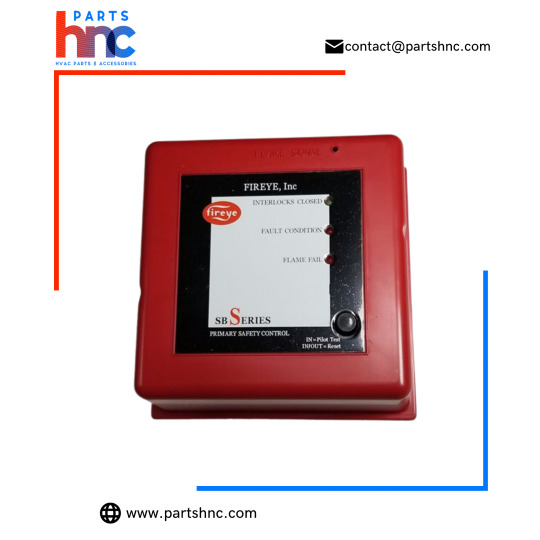
The Fireye SB560232AA 120Vac5/10Tfi, UV, No Purge is an innovative safety control system for HVAC equipment. This gadget makes sure that heating and cooling systems run safely and effectively by utilizing cutting-edge technology. This functions by using its ultraviolet sensors to identify the presence of flames and then initiating the necessary actions to uphold safety regulations. This product enhances energy efficiency and lowers operating costs by providing dependable flame detection without requiring an exhaust cycle, making it compatible with a variety of HVAC equipment, including boilers and furnaces. The accurate detection abilities provide comfort by preventing any risks and enhancing HVAC system performance.
0 notes
Text
What Causes I/O Noise and Interference in PLC Systems? 8 Common Culprits Revealed!
Exploring Common Causes and Solutions for I/O Noise and Interference in PLC Systems

In the realm of industrial automation, PLC (Programmable Logic Controller) systems are indispensable, overseeing the operation of machinery and processes efficiently. However, they face a challenge: I/O (Input/Output) noise and interference. These disruptions can disrupt system stability, leading to malfunctions and downtime. In this comprehensive guide, we delve into the causes and solutions for I/O noise and interference in PLC systems, addressing 8 common culprits that engineers and technicians should understand well.
Understanding I/O Noise and Interference
Before delving into specific causes and solutions, it's crucial to understand the nature of I/O noise and interference. I/O noise refers to unwanted electrical signals or disturbances that corrupt intended signals in PLC systems. Interference includes external factors like electromagnetic radiation, radio frequency interference (RFI), and electromagnetic interference (EMI) disrupting communication between PLC components.
Power Supply Issues: The Silent Saboteur
A stable power supply is crucial for any PLC system. However, fluctuations or disturbances can introduce noise, jeopardizing performance. Issues like voltage spikes, dips, and harmonics can arise, impacting power quality and increasing I/O noise.
Grounding Problems: Unearthing the Root Cause
Proper grounding is vital in mitigating I/O noise and interference. However, inadequate practices can amplify noise within the system. Ground loops and poor connections can create pathways for unwanted currents, resulting in signal distortion and ground noise.
Electromagnetic Interference (EMI): Taming the Invisible Beast
EMI originates from various sources like nearby motors and power lines, inducing unwanted voltages in nearby cables and components. Shielding cables, using twisted pair wiring, and relocating sensitive components can mitigate EMI.
Radio Frequency Interference (RFI): Navigating the Airwaves
RFI, found in industrial environments bustling with wireless devices, poses a threat to PLC systems. Employing frequency filtering techniques and shielding can mitigate RFI.
Crosstalk: When Signals Collide
Crosstalk occurs when adjacent conductors induce voltages in neighboring cables, leading to signal interference. Shielding, spacing, and wiring techniques can mitigate crosstalk.
Environmental Factors: Nature's Influence
External factors like temperature fluctuations and humidity can impact PLC systems. Extreme temperatures and humidity levels accelerate corrosion and compromise signal integrity, while contaminants can lead to short circuits.
Component Aging: The Silent Deterioration
Over time, components within PLC systems deteriorate, impacting performance and reliability. Regular maintenance and component inspection are essential to mitigate aging's impact.
FAQs (Frequently Asked Questions)
1. How do I identify I/O noise in PLC systems? Signal integrity tests using oscilloscopes help pinpoint irregularities in waveforms indicative of noise interference.
2. Can inadequate shielding contribute to I/O noise? Yes, it allows external electromagnetic fields to penetrate cables. Proper shielding minimizes noise ingress.
3. What role does firmware/software play in mitigating I/O noise? Updates may include optimizations or algorithms to filter noise, reducing its impact.
4. Are there industry standards for mitigating I/O noise? Yes, standards like IEC 61000 provide guidelines for EMC.
5. How can ground loops be prevented? Ensuring all ground connections are made at a single point eliminates potential differences and minimizes ground loop currents.
6. What measures mitigate environmental factors' impact? Installing PLCs in controlled environments and using protective enclosures safeguard components from environmental hazards. For more information visit here👉PujaControls
#PLCInterference#EMIandRFI#IndustrialAutomation#ElectricalNoise#PLCTroubleshooting#SignalInterference#ElectricalEngineering#AutomationTechnology#IndustrialControl#NoiseFiltering#ControlSystem#EMIProtection#RFISuppression#FactoryAutomation
0 notes
Text
Control Mechanisms and Gaining a Competitive Advantage

The Importance of Control
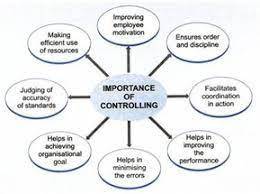
Types of Controls

Control Systems in Operations
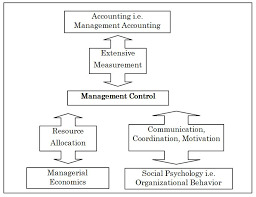
ORGANIZATIONAL CONTROL AND STEPS IN THE CONTROL PROCESS

1 note
·
View note
Text
youtube
I wrote a simple program for Scene2. I implemented states using a word in memory to hold the state id and then compare and movp to change between the states. I also added timers to each state to generate a fault if the state does not complete without the expected time specified. I did not create any logic to handle the error so for now the PLC just flags and continues. Next I would add the routines for error handling and also the EMO logic. I will leave it for now and continue to the next simulation.
https://href.li/?https://github.com/grimmonkey52/Mitsubishi_PLC_projects/blob/main/FIO_SCENE2/SCENE2.pdf
0 notes
Text

Delve into the Core Components of Dust Collection Systems. Discover the Power Source, Particle Separators (Vessels), and System Control, and Elevate Your Workplace Cleanliness to New Heights!
For more details, visit- https://www.acmeairequipments.com/product/dust-collection-system/
0 notes
Text
Precision at Its Core: Mastering Field Instrumentation with iPAC Automation
Are you searching for reliable and cutting-edge Field Instrumentation solutions that ensure accuracy, control and efficiency in every industrial process? Look no further than iPAC Automation - your trusted partner in Instrumentation and Control Automation Engineering.
From Smart Plant Instrumentation to DCS/PLC Migration and SIL Verification Services, we bring robust, tailored systems that enhance productivity and safety across industries like Oil & Gas, Pharmaceuticals and Power Generation.
Dive into our expertise:
Learn how we handle critical processes with Electrical and Instrumentation excellence
Discover how Building Management Systems integrate seamlessly with field devices
Explore our Instrumentation and Control Automation Engineering Services that power mission-critical facilities
At iPAC Automation, we turn data into action and measurements into mastery.
Ready to upgrade your plant’s intelligence? Contact us today or explore more solutions on our website.
#FieldInstrumentation#IndustrialAutomation#SmartPlantInstrumentation#ControlSystems#ProcessAutomation#EngineeringServices#iPACAutomation#ElectricalInstrumentation#SILVerification#DCSMigration#PLCUpgrade
0 notes
Text
Model-Based Design Tools – Accelerating Innovation in Engineering and System Development

In today's competitive and fast-evolving engineering landscape, delivering high-quality products quickly and efficiently is essential. Whether you're developing automotive control systems, industrial automation solutions, or embedded software for smart machines, traditional design methods often fall short in meeting modern demands. Enter Model-Based Design (MBD)—a powerful, integrated approach that enables engineers to design, simulate, and verify systems in a virtual environment before physical prototypes are built.
At the heart of this methodology are Model-Based Design Tools, which streamline development, reduce risk, and enhance innovation. From concept to deployment, MBD tools help teams collaborate effectively, minimize errors, and deliver systems that perform as expected in the real world.
What Is Model-Based Design?
Model-Based Design is an engineering process that uses graphical models to represent the behavior, logic, and structure of a system. Unlike traditional code-centric approaches, MBD relies on visual representations—such as block diagrams, state machines, and simulations—to develop embedded systems and control algorithms.
These models are used throughout the entire development cycle: from system-level simulation and design, to code generation, verification, testing, and implementation. By leveraging a single, reusable model, engineers can ensure consistency across all stages, leading to better designs, faster development, and fewer bugs.
Key Features of Model-Based Design Tools
Model-Based Design Tools offer a wide array of capabilities that simplify and enhance engineering workflows. Some of the core features include:
🧩 Graphical Modeling
Create intuitive visual models of systems using drag-and-drop components, such as sensors, actuators, control logic, and feedback loops. This visual interface helps teams quickly prototype and iterate on design ideas.
⚙️ Simulation and Testing
Simulate system behavior under different conditions to evaluate performance, optimize parameters, and detect issues before implementation. Early-stage testing helps reduce costly late-stage redesigns.
🧠 Automatic Code Generation
Transform validated models into production-quality C, C++, or HDL code using tools like MATLAB® and Simulink®. This accelerates embedded software development while reducing human error.
🧪 Model Verification and Validation
Perform functional testing, requirement checks, and formal verification at the model level. This ensures that your system meets design requirements and regulatory standards.
🔄 Hardware-in-the-Loop (HIL) Simulation
Test models on real hardware or hardware simulators to validate behavior in real-time conditions. HIL testing bridges the gap between simulation and reality.
👥 Collaboration and Integration
Work collaboratively with cross-functional teams by integrating model-based tools with version control systems, requirement management platforms, and code repositories.
Benefits of Using Model-Based Design Tools
The advantages of implementing model-based tools in engineering projects are vast and impactful:
✅ Faster Development Cycles
By enabling rapid prototyping, simulation, and automatic code generation, MBD drastically reduces time-to-market compared to traditional methods.
✅ Improved Product Quality
Systematic verification and validation at every stage ensure robust, reliable systems with fewer bugs and post-release issues.
✅ Cost Savings
Fewer errors, reduced rework, and faster development translate directly into lower development costs.
✅ Enhanced Team Collaboration
With shared models and standardized workflows, cross-disciplinary teams can work together more efficiently and effectively.
✅ Scalable for Complex Systems
From small embedded systems to large-scale control architectures, MBD tools scale with the complexity of your application.
✅ Compliance and Certification Readiness
Model-Based Design supports the development of safety-critical systems, helping meet industry standards like ISO 26262, DO-178C, and IEC 61508.
Real-World Applications of Model-Based Design
Model-Based Design Tools are used across various industries to solve complex engineering challenges. Here are a few key application areas:
Automotive – Designing advanced driver-assistance systems (ADAS), powertrains, electric vehicle control systems, and infotainment features.
Aerospace – Developing flight control systems, navigation software, and fault-tolerant avionics.
Industrial Automation – Creating control systems for robotics, conveyors, packaging machines, and process automation.
Agricultural Technology – Powering autonomous tractors, irrigation control, and precision farming systems.
Medical Devices – Designing embedded control systems for ventilators, pumps, and diagnostic equipment.
Energy – Managing smart grid systems, battery management systems, and renewable energy integration.
Model-Based Design at Servotech
At Servotechinc, we integrate Model-Based Design into our engineering and development services to deliver high-performance, real-time control systems and embedded solutions. We specialize in MATLAB®, Simulink®, and other industry-leading MBD tools to:
Design and simulate control algorithms
Develop embedded software for microcontrollers and real-time systems
Conduct hardware-in-the-loop testing and validation
Generate certified production-ready code
Ensure compliance with industry safety standards
Our approach allows us to deliver customized, efficient, and scalable systems for clients across automotive, industrial, agricultural, and robotic sectors.
The Future of Engineering with MBD Tools
As products become increasingly intelligent and connected, the complexity of system development continues to rise. Model-Based Design is no longer a luxury—it’s a necessity. With its ability to integrate modeling, simulation, and code generation into one cohesive workflow, MBD empowers engineering teams to move faster, innovate boldly, and reduce risks at every stage.
Emerging trends such as digital twins, AI-driven modeling, and cloud-based simulation platforms will continue to push the boundaries of what Model-Based Design Tools can do. The organizations that embrace this methodology today will lead the industries of tomorrow.
Conclusion
Model-Based Design Tools represent a transformative approach to modern engineering—bridging the gap between design and deployment with speed, accuracy, and confidence. Whether you're building the next generation of smart machines or optimizing existing systems, MBD offers the tools you need to succeed.
At Servotech, we're proud to support clients with comprehensive Model-Based Design services that turn ideas into reality—faster, smarter, and better.
#ModelBasedDesign#SystemSimulation#EngineeringInnovation#EmbeddedSystems#Simulink#MATLABDevelopment#ControlSystems#AutomaticCodeGeneration#DigitalEngineering#ServotechSolutions
0 notes
Text
Motor control technology
July 16, 2024
by dorleco
with no comment
Autonomous Vehicle Technology
Edit

The application of different methods and technologies to coordinate and guide the operation of motors is known as motor control technology. Motors transform electrical energy into mechanical motion. They are extensively utilized in many different industries, including robotics, automotive systems, home appliances, and industrial gear. For motors to operate precisely, effectively, and safely in a variety of situations, motor control technology is essential. Several noteworthy facets of motor control technology include the following:
1. Motor controllers:
Microcontrollers and microprocessors, which execute control algorithms, interpret feedback, and generate signals that move the motor, are the brains behind motor control systems.
In motor control applications, digital signal processors, or DSPs, are widely used to interpret signals in real time and enable faster, more accurate control.
2. Algorithms for Control:
PID Management: A popular algorithm for controlling a motor’s speed, position, or torque is proportional-integral-derivative (PID) control. It adjusts control parameters based on the difference between the desired and actual values.
FOC, or field-oriented control: FOC is widely used in AC motor control to independently manage the torque and flux components to increase performance and efficiency.
3. Sensors:
· Encoders: These devices provide information about the motor’s location, allowing for precise position tracking and control.
· Hall Effect Sensors: These sensors monitor the position of the rotor and turn on the motor windings in brushless DC motors.
4. Electronic Drives:
· Inverters: These devices control the output voltage and frequency while transforming DC power into AC electricity for AC motors.
· Amplifiers: Increase the control signals from the controller to the power levels required by the motor.
5. Protocols for Communication:

· Ethernet and Wireless Communication: These technologies, which offer advantages like remote monitoring and control, enable communication in networked systems.
6. Power Electronics:
· Power Factor Correction (PFC): Improves the energy efficiency and power factor of the motor control system.
· Variable frequency drives (VFD) and soft starts: By enabling motors to accelerate and decelerate under control, VFDs and soft starters reduce mechanical stress and energy consumption.
7. Enhanced Features:
Regenerative braking allows the motor to act as a generator by recovering energy during braking and transferring it back into the power source.
By employing sensors and data analytics to detect possible motor breakdowns, predictive maintenance enables proactive maintenance.
8. Industry 4.0 integrating IoT:
· IoT Connectivity: By connecting motor control systems to the Internet of Things (IoT), it is possible to diagnose, monitor, and control them from a distance.
· Data analytics: Motor performance optimization, efficiency increase, and predictive maintenance.
The advantages of motor control technology
Applications for motor control technology can be found in many different fields. The following are some of the main benefits:
1. Efficiency of Energy Use:
Motor speed, torque, and position can all be precisely controlled by motor control systems, which maximize energy consumption.
Power Factor Correction (PFC) and Variable Frequency Drives (VFDs) are two examples of energy-saving technologies that enhance power factor and adjust motor operation in response to demand.
2. Precision & Accuracy:
Advanced control algorithms such as PID and Field-Oriented Control (FOC) provide precise control over motor parameters, ensuring proper motion and placement in robotics and industrial processes.
3. Improved Results:
The performance of the system is enhanced overall because motor control technology enables smoother acceleration and deceleration and lessens wear and tear on mechanical components.
Faster reaction times and improved dynamic behavior are a result of strong motor control systems.
4. Lower Maintenance Expenses:
Predictive maintenance features, which save maintenance costs and downtime by identifying issues before they lead to equipment failure, are made possible by motor control technology.
Two more elements that increase equipment life and reduce maintenance requirements are soft starts and controlled acceleration and deceleration.
5. Adaptability and Flexibility:
Motor control systems can be employed in situations where the load needs fluctuate because of their flexibility.
Programmable controllers and flexible communication protocols enable easy integration into a wide range of automation systems.

Motor control technology can recover energy during braking and deceleration through the use of regenerative braking.
This feature can be particularly useful in situations where stopping is done frequently and contributes to greater energy efficiency.
7. Industry 4.0 Integration and Automation:
Motor control technology is a key component used in Industry 4.0 and smart factory implementations.
Modern communication protocols and data analytics integration assist data-driven decision-making and optimization.
8. Monitoring and Control at a Distance:
Integration with IoT and communication protocols enables remote monitoring and control of motorized systems, enabling real-time diagnostics and alterations.
Remote access facilitates troubleshooting and reduces the need for on-site interventions.
The motor control technology’s shortcomings
Motor control technology has many advantages, but it also has some disadvantages and challenges in its use. Among the principal downsides are the following ones:
1. Price and intricacy:
The intricacy of developing, putting into practice, and maintaining sophisticated motor control systems can lead to higher initial costs.
Because these systems are complex, specialized skills may be required for installation and troubleshooting.
2. Sensitivity to Environmental Conditions:
It is evident how sensitive motor control systems are to many environmental factors, such as temperature, humidity, and pollution. Weather extremes might affect performance and dependability.
3. Electromagnetic interference (EMI) compatibility:
Electromagnetic interference from motor control electronics may affect other nearby electronic devices. Appropriate shielding and filtering are required to lower EMI.
Compatibility issues may arise when integrating motor control systems with machinery or systems that are already in place.
4. Restricted Tolerance to Fault:
Although motor control systems are often equipped with safety safeguards, they may not be as fault-tolerant as they may be. Failed vital control systems may cause unexpected motor action and possibly cause damage.
5. Maintenance Difficulties
Predictive maintenance features do not guarantee against unexpected failures, thus prompt intervention is still necessary.
Certain applications may be concerned about downtime during maintenance, and certain skills may be required for maintenance.
6. Restricted Standardization

When attempting to mix parts from multiple manufacturers, integration challenges may come up.
7. The Learning Curve
when using new technologies or control algorithms, engineers and technicians may need to go through a learning curve to deploy and optimize motor control systems.
Conclusion:
To sum up, motor control technology is a revolutionary and transformative force that is reshaping various sectors by enabling us to operate motors more efficiently and intelligently. Automation and industrial processes have advanced greatly due to their many advantages, including improved safety, precision, and energy efficiency. When combined with predictive maintenance capabilities, the capability to remotely monitor and regulate motors lowers maintenance costs and downtime, promoting a more dependable and sustainable operating environment.
But it’s important to recognize the difficulties with motor control technologies. The intricacy of these systems, possible sensitivity to environmental factors, and compatibility and standards concerns highlight the necessity of meticulous preparation, execution, and continuous upkeep. To guarantee the integrity and security of these vital systems, the integration of motor control systems into the larger Industry 4.0 framework also presents cyber security issues that need to be resolved.
Research and development efforts are being made to further improve the adaptability, robustness, and ease of integration of motor control technology, as well as to mitigate these issues as technology continues to evolve. The continued convergence of technology innovation and real-world application holds the potential to unleash even higher efficiency, opening the door to more intelligent, networked, and environmentally friendly industrial processes. A balanced strategy that takes into account both the benefits and drawbacks of motor control technology navigation will be essential for successful adoption and long-term gains.
#Autonomousvehicle#motorcontrol#technology#evcc#ccu#evse#ProgrammableVCU#embeddedsystem#Dorleco#VCUSupplier#VCU#Controlsystem
0 notes
Text
B.Tech - Mechatronics Engineering
B.Tech in Mechatronics Engineering is a multidisciplinary program that combines elements of Mechanical Engineering, Electronics, Computer Science, and Control Engineering. It aims to create engineers capable of designing and developing intelligent systems, robotics, automation, and advanced machinery. This program is perfect for students passionate about working with cutting-edge technologies such as robotics, AI, automation, and smart systems.

Curriculum and Key Subjects:
The B.Tech program is typically a four-year course, divided into eight semesters, focusing on both theoretical and practical aspects. Some key subjects include:
Mechanical Design and Manufacturing
Control Systems and Automation
Electronics and Sensor Systems
Embedded Systems
Robotics and Intelligent Systems
AI and Machine Learning
Programming for Mechatronics Systems
The program also includes laboratory work, projects, and internships to help students gain hands-on experience in designing and integrating complex systems.
Career Opportunities:
Graduates of B.Tech Mechatronics Engineering can work in various industries like robotics, aerospace, automotive, manufacturing, healthcare, and consumer electronics. Some job roles include Robotics Engineer, Automation Engineer, Mechatronics Engineer, and Control Systems Engineer.
Conclusion:
B.Tech in Mechatronics Engineering provides a strong foundation for students to pursue exciting careers in high-tech industries, offering immense growth potential in the fields of robotics, automation, and AI-driven technologies.
#MechanicalEngineering#ElectronicsEngineering#ControlSystems#AIandRobotics#SmartMachines#EngineeringEducation#TechInnovation#EmbeddedSystems#IndustrialAutomation#FutureOfEngineering#MechatronicsDesign#RoboticSystems#EngineeringStudents#MechatronicsCareer#RoboticsAndAI
1 note
·
View note
Text
🚦 DIY Tower Light Installation – Step-by-Step Guide! ⚡🔧 #c3controls
💡 Light up your workspace with a Tower Light! Whether you're working in an industrial setting or upgrading your control panel, a properly installed tower light ensures safety, efficiency, and visibility.
In this quick DIY installation guide, we’ll show you how to: ✅ Mount & wire a c3controls Tower Light 🔌 ✅ Ensure a safe and efficient setup 🛠 ✅ Improve industrial automation & signaling 🚦
📽️ Watch the full installation guide here: 👉 https://youtu.be/LDuzPBAg7Q8?si=HFxC99WNi9mg3Rgm
🛒 Get your c3controls Tower Light today: 👉 https://www.c3controls.com/products/world-tower-lights/
#TowerLight#DIYInstallation#IndustrialAutomation#ElectricalEngineering#c3controls#FactorySafety#Automation#EngineeringLife#ElectricianTips#IndustrialDesign#ControlSystems
1 note
·
View note
Text
Robotics and Automation in Mechanical Engineering Education
Explore the intersection of robotics and automation in Mechanical Engineering, preparing to shape the future of manufacturing and intelligent systems.
#best college of engineering in trichy#best autonomous college of engineering in trichy#krce the top engineering college in trichy#top college of engineering in trichy#krce the best college of engineering in trichy#college life stories#RoboticsandAutomation#Automation#MechanicalEngineering#SmartManufacturing#Mechatronics#ControlSystems#IndustrialInnovation#RoboticSystems#EngineeringExcellence#FutureOfManufacturing
0 notes




